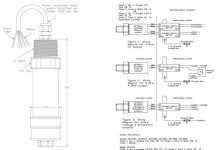jfd7851
Member
Hi everyone,
As stated in the title, this is my first time configuring a 4-20mA device and I am using Rockwell's 1734-IE4C module as part of the Point I/O module. The sensor I am connecting has three wire leads. One is red which I am assuming is +, One is black which I am assuming is - and one is green which I'm assuming is ground.
Based off the amount of wires and the picture from the IE4C manual, it seems like I would connect the red + into one of the input channels, black into the common, and the green into the Chassis Ground terminal?
If anyone has any experience wiring 4-20mA and could offer some words of wisdom, I would greatly appreciate it. Thank you.
As stated in the title, this is my first time configuring a 4-20mA device and I am using Rockwell's 1734-IE4C module as part of the Point I/O module. The sensor I am connecting has three wire leads. One is red which I am assuming is +, One is black which I am assuming is - and one is green which I'm assuming is ground.
Based off the amount of wires and the picture from the IE4C manual, it seems like I would connect the red + into one of the input channels, black into the common, and the green into the Chassis Ground terminal?
If anyone has any experience wiring 4-20mA and could offer some words of wisdom, I would greatly appreciate it. Thank you.




